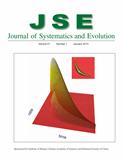Liang LENG, De-Xing ZHANG
Genetic differentiation of populations has been traditionally quantified by Wright's F-statistics, typically assuming mutation–migration–drift equilibrium. However, the equilibrium perspective can be unrealistic as many natural populations are likely not yet in equilibrium. Therefore, understanding the behaviors, robustness, and power of the differentiation indexes under non-equilibrium conditions has important implications. Here, we report an extensive examination of the properties of two major indexes GST and D under non-equilibrium conditions by theoretical deduction under the infinite allele model (IAM) and simulation under the stepwise mutation model (SMM). Several properties of GST and D valid under both SMM and IAM, which have not been recognized under the equilibrium perspective, were unveiled. First, if gene flow is very weak (e.g., m < 10−4), GST, like D, also takes a fairly long time to reach equilibrium if mutation rate is not very large. When GST (D) is in equilibrium depends on when HS and HT are both in equilibrium. Under IAM and complete isolation, this is determined by the product of µ and t: GST will not approach equilibrium as long as µt ≪ 1. Under SMM, 10−4 appears to be the rough threshold migration rate; when m < 10−4, GST approaches equilibrium much slower and later than HS, whereas the opposite is true when m > 10−4. Second, contrary to the popular belief, µ ≪ m is neither an obligatory request for GST to be an effective differentiation measure nor a sufficient condition for using GST to estimate gene flow level (Nm), if GST is not yet approaching equilibrium. Third, under SMM (but not IAM) and complete isolation, when population size is large (e.g., ≥1000), mutation rate shows a great impact on GST but only a mild influence on D; hence D can be much less sensitive to mutation rate heterogeneity than GST in certain situations. Fourth, whatever the level of gene flow, drift plays a dominant role on GST, whereas gene flow appears to have a stronger influence on D when subpopulations exchange individuals (even only infrequently). Moreover, GST appears to have a larger power to detect recent population genetic events than D. Finally, it is the migration rate (m), not the absolute number of migrants (Nm), that determines the speed at which GST or D approaches equilibrium. These results suggest that GST and D bear unique revealing powers under non-equilibrium conditions.

